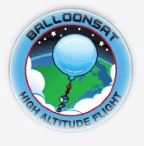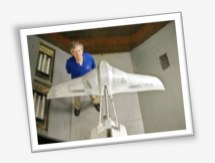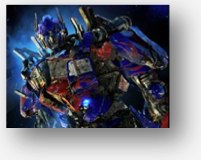Link to the NES Virtual Campus home page.
Tag: Student Opportunity
NASA Now-Glory Launch

Link to the NES Virtual Campus home page.
NASA Now-Shuttle Engineering Design Challenge–Guidance, Navigation and Flight Control
 In this installment of NASA Now, you’ll meet Guidance, Navigation and Flight Controls engineer George Hatcher, who talks about the complex system needed to fly the space shuttle at extreme speeds and in extreme environments. Learn about the instruments used to inform the shuttle of its location, how to get where it wants to go, and what to do to change direction. The program focuses on the technology and physics of this complex spacecraft.
In this installment of NASA Now, you’ll meet Guidance, Navigation and Flight Controls engineer George Hatcher, who talks about the complex system needed to fly the space shuttle at extreme speeds and in extreme environments. Learn about the instruments used to inform the shuttle of its location, how to get where it wants to go, and what to do to change direction. The program focuses on the technology and physics of this complex spacecraft.
Link to this episode of NASA Now (requires log-in credentials).
Link to the NES Virtual Campus.
NASA Now Promotion Video
Balloonsat High Altitude Flight Student Competition
 The BHALF competition is open to teams of four or more students in grades 9 to 12 from high schools and community groups throughout the United States, District of Columbia, and U.S. territories. Teams develop a flight experiment or technology demonstration and submit a proposal for consideration by a panel of NASA scientists and engineers. The panel will select eight teams to design and construct their project for competition. The eight projects will be sent to the near space environment of the stratosphere, or nearly 100,000 feet (~ 50.5 km) above Earth, during several NASA weather balloon launches in Northeastern, Ohio.Proposals are due February 11, 2011.
The BHALF competition is open to teams of four or more students in grades 9 to 12 from high schools and community groups throughout the United States, District of Columbia, and U.S. territories. Teams develop a flight experiment or technology demonstration and submit a proposal for consideration by a panel of NASA scientists and engineers. The panel will select eight teams to design and construct their project for competition. The eight projects will be sent to the near space environment of the stratosphere, or nearly 100,000 feet (~ 50.5 km) above Earth, during several NASA weather balloon launches in Northeastern, Ohio.Proposals are due February 11, 2011.
Potlatch Students Recycle Water for the Moon!
No Boundaries — Project-based Competition for Students

NES Chat With NASA Scientist Dr. Joel S. Levine
 NASA Explorer Schools invites K-12 students to join a live chat on Jan. 21 from 2 – 3 p.m. EST with Dr. Joel S. Levine. Dr. Levine is the Chief Scientist of the ARES Mars Airplane Mission, and will answer questions about the the development of a robotic, rocket-powered airplane that will fly through the atmosphere of Mars to search for evidence of life by looking for trace gases of biogenic origin.
NASA Explorer Schools invites K-12 students to join a live chat on Jan. 21 from 2 – 3 p.m. EST with Dr. Joel S. Levine. Dr. Levine is the Chief Scientist of the ARES Mars Airplane Mission, and will answer questions about the the development of a robotic, rocket-powered airplane that will fly through the atmosphere of Mars to search for evidence of life by looking for trace gases of biogenic origin. Join the chat at https://www.nasa.gov/offices/education/programs/national/nes2/home/live-chat-Levine.html
Voting Open for This Year's NASA OPTIMUS PRIME Student Video Contest
 Teachers, are you interested in incorporating video technologies into student learning activities? Here’s a great way to show your students examples of student-created videos that support learning.
Teachers, are you interested in incorporating video technologies into student learning activities? Here’s a great way to show your students examples of student-created videos that support learning.Education Innovation — Google Science Fair
 On Jan. 11, 2011, Google launched the inaugural Google Science Fair. Google has partnered with CERN, National Geographic, Scientific American and the LEGO Group to create this new STEM competition. This is a global competition open to any student aged 13-18, and students may enter as individuals or as teams of up to three. There is no entry fee. Registrations and submissions will be made online. The Science Fair will culminate in a celebratory event at Google headquarters in California in July 2011, where finalists will compete for internships, scholarships and prizes in front of a panel of celebrity scientist judges, including Nobel Laureates and household names.
On Jan. 11, 2011, Google launched the inaugural Google Science Fair. Google has partnered with CERN, National Geographic, Scientific American and the LEGO Group to create this new STEM competition. This is a global competition open to any student aged 13-18, and students may enter as individuals or as teams of up to three. There is no entry fee. Registrations and submissions will be made online. The Science Fair will culminate in a celebratory event at Google headquarters in California in July 2011, where finalists will compete for internships, scholarships and prizes in front of a panel of celebrity scientist judges, including Nobel Laureates and household names.International Space Station EarthKAM Winter 2011 Mission
 International Space Station EarthKAM is a NASA-sponsored project that provides stunning, high-quality photographs of Earth taken from the space shuttle and the space station. Since 1996, EarthKAM students have taken thousands of photographs of Earth by using the World Wide Web to direct a digital camera on select spaceflights and, currently, on the space station.
International Space Station EarthKAM is a NASA-sponsored project that provides stunning, high-quality photographs of Earth taken from the space shuttle and the space station. Since 1996, EarthKAM students have taken thousands of photographs of Earth by using the World Wide Web to direct a digital camera on select spaceflights and, currently, on the space station.